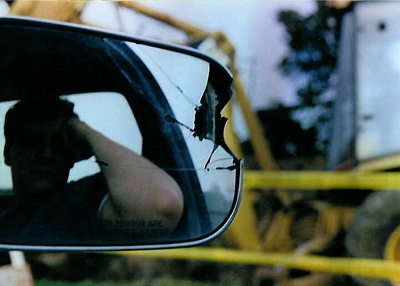All Nonfiction
- Bullying
- Books
- Academic
- Author Interviews
- Celebrity interviews
- College Articles
- College Essays
- Educator of the Year
- Heroes
- Interviews
- Memoir
- Personal Experience
- Sports
- Travel & Culture
All Opinions
- Bullying
- Current Events / Politics
- Discrimination
- Drugs / Alcohol / Smoking
- Entertainment / Celebrities
- Environment
- Love / Relationships
- Movies / Music / TV
- Pop Culture / Trends
- School / College
- Social Issues / Civics
- Spirituality / Religion
- Sports / Hobbies
All Hot Topics
- Bullying
- Community Service
- Environment
- Health
- Letters to the Editor
- Pride & Prejudice
- What Matters
- Back
Summer Guide
- Program Links
- Program Reviews
- Back
College Guide
- College Links
- College Reviews
- College Essays
- College Articles
- Back
Parallel
I love parallel lines.
In primary school, when we were asked to name our favorite shapes, my choice, parallel lines, was ridiculed. I blushed as my classmates, who had chosen circles or curves, declared that parallel lines, which never intersected, were boring. I stood firm in my belief that parallel lines, however far apart, could somehow touch.
I love Chinese Animation.
In middle school, I was asked to recite MuLan Ci, an ancient Chinese poem about a female warrior who sacrificed herself on the battlefield. Most of my friends learned about this Chinese legend through the “happily ever after” Disney version, and although I caught myself singing its songs in my head weeks after watching the film, I was concerned that Chinese students were learning only foreign versions of our culture. Alone among a world of Mulan fans, I stood firm in my insistence that China needed better animation to preserve our culture, and that the government was necessary for this improvement.
Then, both my naive beliefs were shattered. I remember my disappointment when I looked in my math textbook and saw 5 words in official ink: parallel lines can never touch.
Almost simultaneously my hopes for Chinese animation were similarly stifled by authority. My 10,000 word proposal to establish an official intra-school Animation Association was rejected by a government official – perhaps another Mulan lover? – who claimed it was none of my business.
Reality refused to intersect with my dreams; both of my passions were confronted by physical impossibilities.
But then, in high school, my math teacher mentioned something that radically changed my perspective. “Parallel lines can in fact intersect outside of the conventional Euclidian plane”, he said, and, with this, opened my eyes to two parallel worlds of infinite possibility.
I rushed to search the internet for information on non-Euclidean geometry. In Lobachevski geometry, parallel lines can share an intersection; in Riemannian geometry, parallel lines can intersect millions of times! These discoveries showed me the limitless world of mathematics and gave me courage to believe in myself and look for exciting new intersections.
This discovery of alternate geometries also encouraged me to pursue my hopes for Chinese animation on my own, without relying on the government. It gave me the power to surpass my predefined limitations. Animation is no longer restricted in the original plane of TV screen. Instead, it stretches into a “non-Euclidean” plane of evoking cultural awareness, of reaching out to others, and of spreading happiness and laughter.
Through holding school panels comparing Chinese and foreign animation, I helped students find joy rediscovering the charm of their own cultural heritage. Soon, students were approaching me regularly to borrow my Chinese animation videos or discuss solutions to improve Chinese animation. By teaching drawing to mentally challenged children, I got to see them laughing and enjoying while doodling. When I helped them organize their exclusive art exhibition, I was overjoyed to bring social awareness not only to these children but also to animation, and I experienced firsthand the learning and true happiness that animation can inspire.
These parallel experiences have shown me that mathematics is more than rules and measurements, that animation can extend beyond video screens, and that true solutions often ignore usual boundaries. Beyond the traditional plane, there exist millions of intersections between dreams and reality where seemingly irrelevant things are linked and seemingly impossible things become possible.

Similar Articles
JOIN THE DISCUSSION
This article has 0 comments.
